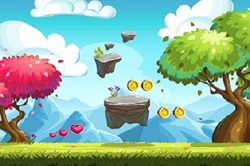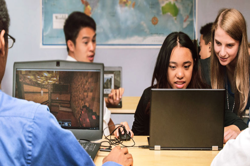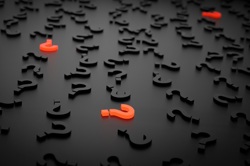Design and deliver
In this lesson sequence students create a website that acts as a showcase for a portfolio of their digital work. They learn about flexible design and how to design a site that can be viewed on a browser using any size of screen.
Additional details
| Year band(s) | 9-10 |
|---|---|
| Content type | Lesson ideas |
| Format | Web page |
| Core and overarching concepts | Impact and interactions, Design thinking |
| Australian Curriculum Digital Technologies code(s) |
AC9TDI10P07
Design and prototype the user experience of a digital system |
| Keywords | User interface, User experience, Design, CSS |
| Integrated, cross-curriculum, special needs | Design and Technologies |
| Organisation | ESA |
| Copyright | Creative Commons Attribution 4.0, unless otherwise indicated. |
Related resources
-

Classroom ideas F-10: Aboriginal and Torres Strait Islander connections to Digital Technologies
This resource provides examples of ways Aboriginal and Torres Strait Islander Histories and Cultures can be integrated into Digital Technologies. Examples include 'classification and sorting data' and 'designing solutions'.
-

AI ethics - What's possible, probable and preferred?
The development and ubiquity of Artificial Intelligence raise a number of social and ethical matters that students can explore in the Digital Technologies classroom.
-

Building Machines That Emulate Humans
Students build robotic models from cardboard and straws to understand the anatomy and biomechanics of the human hand. Then, they conduct trials visualizing data in Excel to generate new ideas for improving it’s performance.
-

Level Up: Game design
This unit of work is intended to teach years 9–10 students basic programming, using general purpose programming language.
-

Minecraft Lesson Plans
Find Minecraft lessons spanning primary and secondary school for use with your students.
-

Systems Thinking and AI applications
This lesson takes a systems thinking approach to understanding the place of artificial intelligence (AI) as a component within solutions to real world problems, such as predicting bushfire hotspots, spotting and monitoring animals in the wild, automated horticulture and agriculture, and early detection of medical issues.
-

Habits of a Systems Thinker
This lesson introduces some of the skills and concepts involved with Systems Thinking.
-

Filter bubbles, bias, rabbit holes and nudging
This lesson focuses on the AI systems that recommend content in various applications that students use on a day-to-day basis. It draws on students’ ethical understandings during analysis of these systems.
